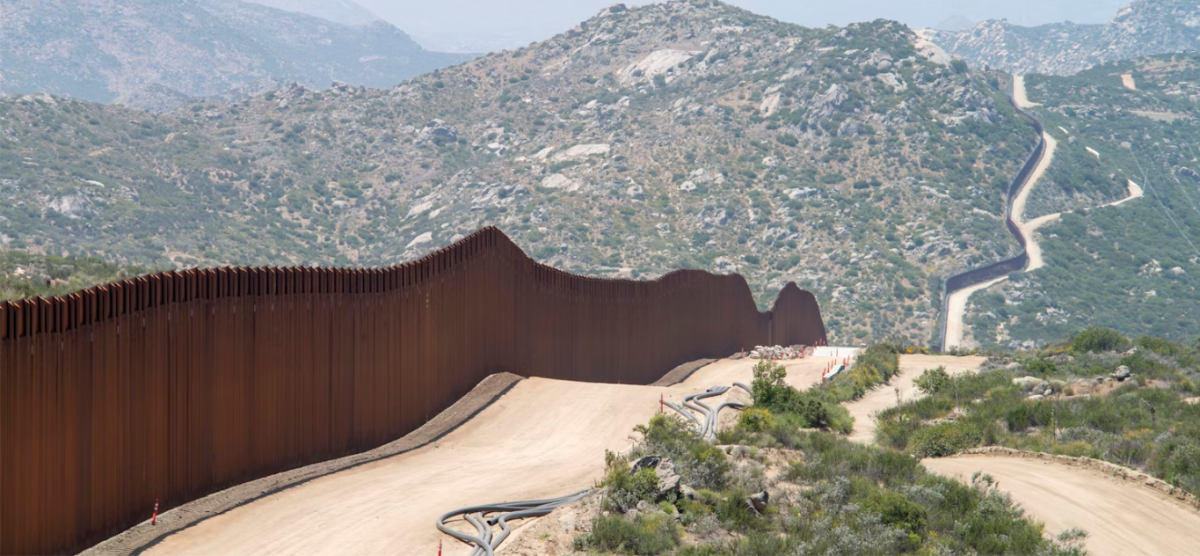The 2,500-plus mile journey undertaken in search of safety, work and prosperity.
The Darién Gap is a 66 mile roadless, lawless stretch of mountainous rainforest in between Colombia and Panama. It is the only place where the Pan American Highway breaks off, and has held the reputation of being virtually uncrossable, by locals and visitors alike. Yet the past few years have seen an exponential increase of migrants crossing this stretch, all in hopes of reaching the United States in search of work and safety.
In the first seven months of 2023, almost 250,000 people, mostly from Venezuela, risked their lives to navigate the Darién Gap on foot. This figure has already surpassed the number of migrants that crossed in all of 2022. The number of children making the crossing also went up in recent years, with close to 32,500 entering the jungle between January and October 2022.
The trek can take more than a week, with dangers ranging from ravines and flash floods to vipers and poisonous spiders. There are also man-made contributions to the landscape, such as unexploded ordnances left by the US military, which practiced dropping bombs over the Darién as part of its Cold War mission to make the world safe for capitalism.
Economic insecurity, political upheaval, and violence are causing a record number of migrants to flee their home countries. Most migrants trying to cross the Darién Gap are also desperately poor, searching for safety and prosperity. In recent years, the COVID-19 pandemic has also exacerbated these economic problems, driving thousands to risk their lives in the jungle.
In August, Panama’s Immigration Service Director, Samira Gozaine, said that between 2,600 and 2,800 migrants have been making the crossing per day. It’s estimated that if this pace continues, as many as 400,000 people may cross the Darién Gap by the end of 2023.
The lifting of COVID-19 border restrictions has reopened many travel routes across Latin America. Most migrants are ultimately headed for the southern U.S. border, where they hope the Biden administration will grant them asylum. But, as the United States faces an immigration crisis, it’s becoming increasingly harder to get into the country.
The majority of migrants are from Venezuela, followed by Ecuador and Haiti. However, some come from as far away as Angola, Bangladesh, and Uzbekistan.
Since a devastating earthquake rocked Haiti in 2010, tens of thousands of Haitians have moved to South America, where they have faced discrimination and economic difficulties. In 2021, 61 percent of migrants traversing the Darién Gap were from Haiti, dropping to 9 percent in 2022. Despite this, Haiti continues to endure gang violence and political instability.
The number of people risking their lives to cross has increased as socioeconomic conditions continue to worsen across South America. For example, the number of Venezuelans crossing the gap has sharply increased as the humanitarian and political situation in their country has deteriorated. Many of the Venezuelans who are making the journey are on the move for the second or third time, after struggling to rebuild their lives in other South American countries.
In order to embark on this journey, migrants must go to the north, to the coastal town of Necoclí, Colombia. Most migrants already in the region travel on foot or take local transportation to get there. But for those coming from Africa and the Caribbean, the route is more complicated.
With more pressure from the United States to contain illegal immigration, the Mexican government has restricted its visa requirements, making it more difficult for people to fly directly to the U.S.-Mexico border. Instead, they opt to fly into Brazil or Ecuador, where visa policies are more lenient.
Necoclí is a major transit point for migrants seeking to enter Panama from Colombia. While the number of migrants crossing the border slowed at the start of the COVID-19 pandemic, the relaxation of travel restrictions across the region has seen thousands of migrants flow into the small town. From there, they have to take an hour-long boat ride to Acandí, a town about five miles from the Panama border.
Once in Acandí, migrants head for the Darién Gap. It can be a dangerous hike, sometimes taking ten or more days. Many pay to be led by local guides, or “coyotes.” Along the route are smugglers and criminal groups, including members of the Revolutionary Armed Forces of Colombia (FARC) and the Gulf Clan, a paramilitary group and Colombia’s largest drug cartel.
The trek through the jungle can be harsh and deadly. Travelers have to cross 60 miles of dangerous and roadless paths filled with mud and rocks. The path is especially dangerous for women and children, as sexual attacks are common. Many don’t make it, and even for those that do, the journey is nowhere near over.
While the route is evolving, migrants usually exit the jungle at Bajo Chiquito, a small village in eastern Panama. There, they are met by international humanitarian organizations such as Doctors Without Borders and UNICEF.
But to get to the United States, migrants still have to cross half a dozen more borders and travel over 2,500 miles, where they face the constant risk of being stopped or deported. In early 2023, U.S. officials announced they had struck a deal with Colombia and Panama to shut down the Darién Gap route.
As the U.S. tries to tighten border control even further, more and more migrants have been forced to stay at the border. As conditions in their home countries deteriorate, it is unclear what they must do. With mass deportations and stoppings at the border, many migrants face the demise of their dreams of prosperity and safety, the reason they came so far in the first place.







![[Protest Tbilisi April 2024] by [Jelger Groeneveld] is licensed under [CC BY 2.0].](https://flhsprospect.com/wp-content/uploads/2025/01/Screenshot-2025-01-29-151213-1-1200x897.png)
